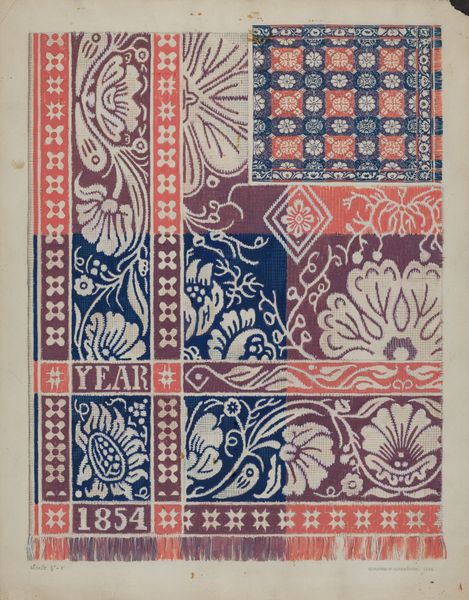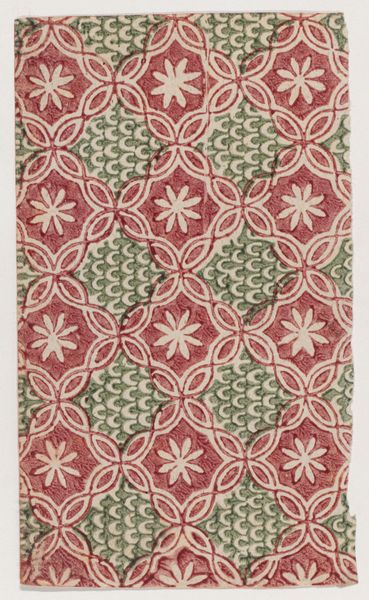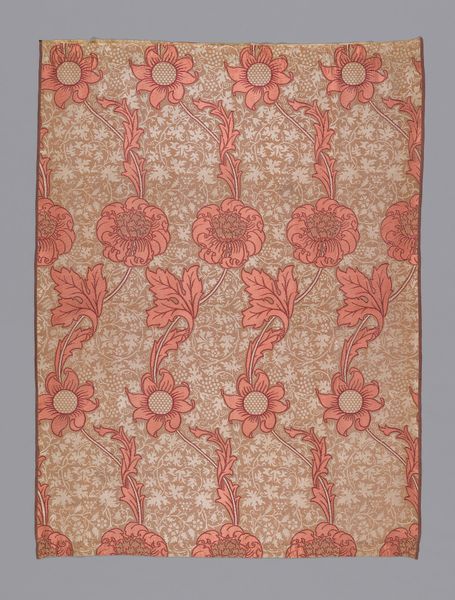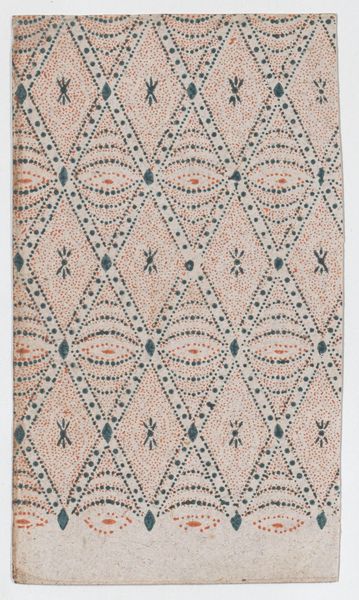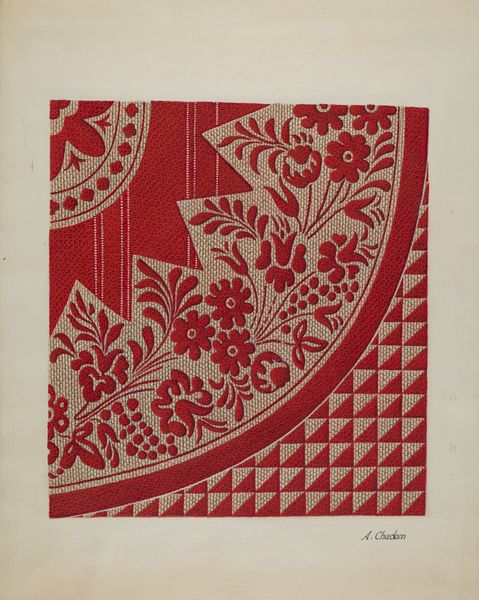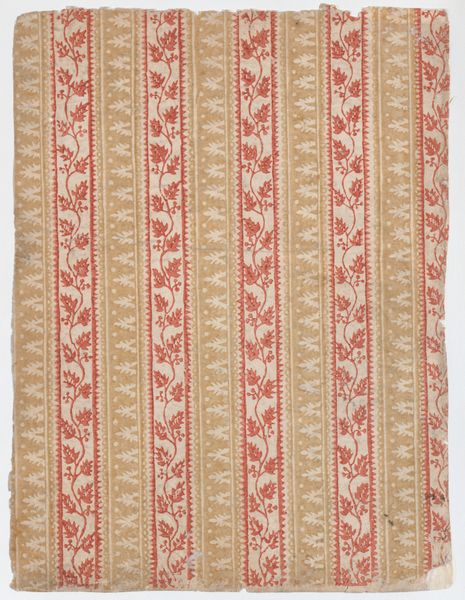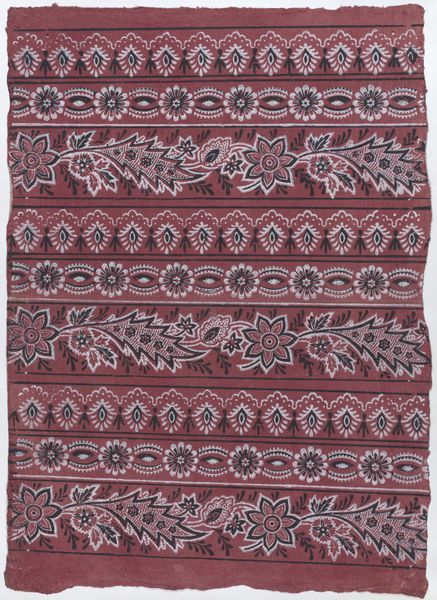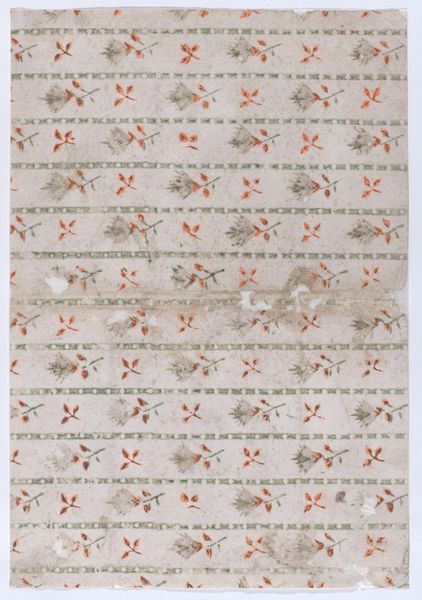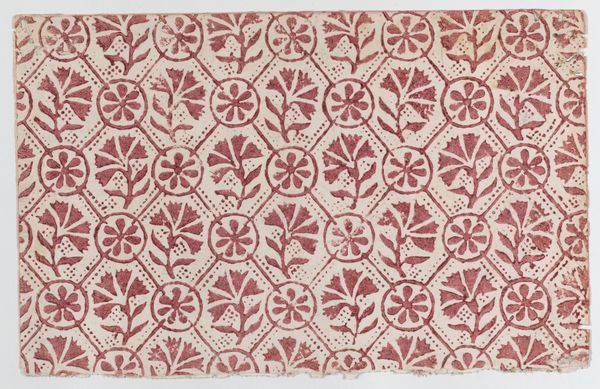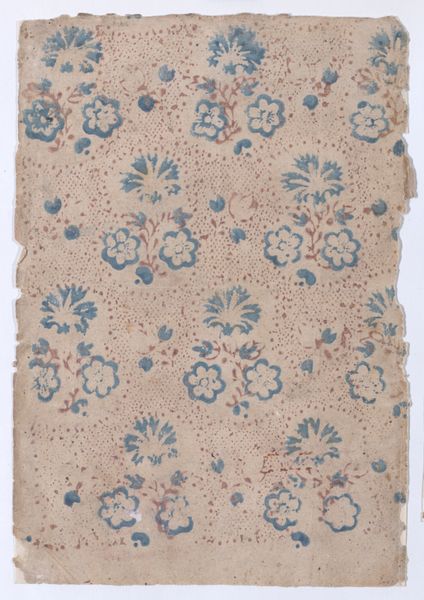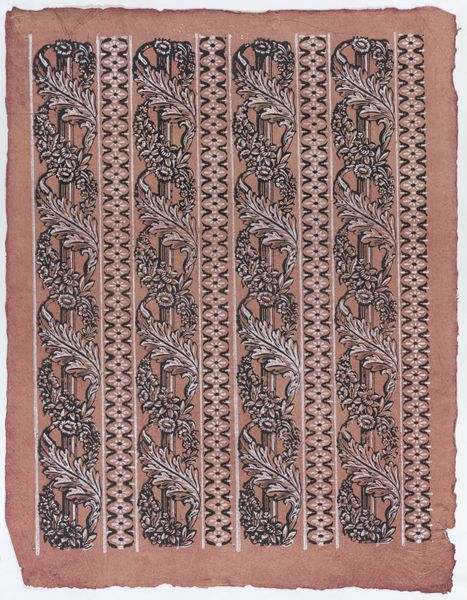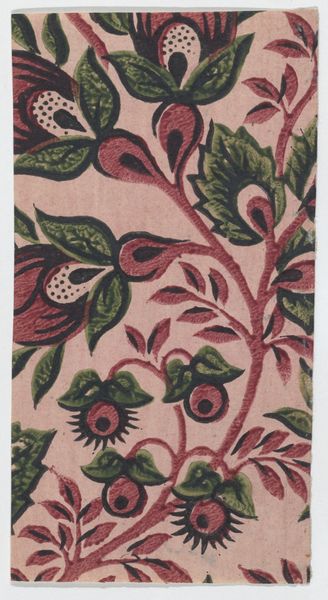
Red sheet with two borders with a white floral pattern atop a black lace pattern 1775 - 1875
0:00
0:00
drawing, print, textile
#
drawing
# print
#
pattern
#
textile
#
fashion and textile design
#
pattern background
#
geometric
#
repetition of pattern
#
pattern repetition
#
textile design
#
imprinted textile
Dimensions: Sheet: 14 1/8 × 9 1/8 in. (35.8 × 23.2 cm)
Copyright: Public Domain
Curator: This object, found at the Metropolitan Museum of Art, is listed as “Red sheet with two borders with a white floral pattern atop a black lace pattern." Created anonymously sometime between 1775 and 1875, it appears to be a drawing or print related to textile design. Editor: It's instantly charming! The repeated floral motifs over that black lace texture create such an interesting visual rhythm. It feels both delicate and somehow...grounded. Curator: Designs like this circulated widely and had a significant role in shaping textile production during this period. The patterns showcase not just artistic trends but the practical needs and demands of the market. Editor: And speaking of demands, who was demanding this look? It's hard not to see these florals set against what could be a dark ground as a reference to mourning traditions, where fashion navigated grief. Curator: That’s astute! The cultural history of mourning practices in the 18th and 19th centuries definitely saw textiles play a vital symbolic role, demonstrating both sentimentality and social status. This sheet might very well be a study of patterns for garments. Editor: Exactly! And it raises the question of accessibility too. While lace might evoke ideas of aristocracy, these repeating patterns—achieved through printing, no doubt—suggest a drive towards broader availability, even if just in aesthetic imitation. How subversive. Curator: Mass production democratized design by making stylish goods available to more people, impacting taste, decor, and even self-expression on different social levels. It blurred class lines and encouraged a growing sense of individualism through fashion. Editor: And that individual expression still depended on broader cultural codes of presentation. Considering its function as a print or a design, one has to consider how this impacted trends and personal presentation. The possibilities of personal identity and what they reflect of broader sociopolitical circumstances fascinate me. Curator: Absolutely. We can continue to reflect on the impact it had on contemporary textile arts as this piece offers a wonderful snapshot into that crucial transition in design production and societal value. Editor: Yes, leaving me excited to continue contemplating the layered significances of what was fashionable—and perhaps, subtly rebellious—during the time!
Comments
No comments
Be the first to comment and join the conversation on the ultimate creative platform.
